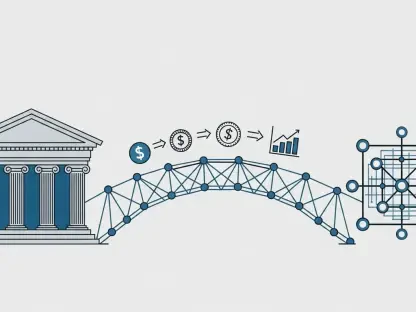Welcome to an insightful conversation with Kofi Ndaikate, a leading expert in the fast-evolving field of financial technology. With a deep understanding of blockchain, cryptocurrency, and regulatory frameworks, Kofi brings a unique perspective to the intersection of innovation and wealth management. Today, we’re diving into the transformative work happening in the RIA space, focusing on how cutting-edge platforms are reshaping advisor-client relationships. Our discussion explores the motivations behind building modern wealth management tools, the power of data aggregation and visual storytelling, and the critical role of partnerships and support systems in delivering seamless experiences. Let’s get started.
Can you walk us through what drives the creation of next-generation RIA platforms in today’s wealth management landscape?
Absolutely. The wealth management industry is at a turning point where clients expect far more than just performance updates. They want personalized insights, a clear view of their entire financial picture, and guidance that aligns with their life goals. The inspiration behind platforms like these often comes from the frustration with fragmented systems that make it hard for advisors to deliver that holistic experience. The goal is to solve challenges like inaccessible data and disjointed tools, creating a space where advisors can focus on relationships rather than wrestling with technology.
How do these modern platforms make the wealth management process easier and more meaningful for both advisors and their clients?
These platforms streamline everything by bringing multiple aspects of financial planning—think estate planning, insurance, or goals-based advice—into a single, unified system. For clients, this means no more jumping between different apps or reports to understand their finances; they get a cohesive view that feels intuitive. For advisors, it’s a game-changer because they can spend less time on manual data collection and more time providing tailored advice. It strengthens trust and makes the whole experience feel more human and connected.
I’d love to hear more about innovative tools like visual balance sheets. How do they help clients better grasp their financial situation?
Visual balance sheets are incredibly powerful because they take complex financial data—assets, liabilities, goals—and turn it into a simple, easy-to-understand picture. Instead of staring at rows of numbers, clients can see their net worth laid out visually, which makes it far more relatable. It helps demystify their finances and sparks better conversations with advisors. When clients can literally see where they stand, it often motivates them to stay engaged, even when markets get rocky.
What role does real-time interactivity in these tools play in keeping clients engaged, especially during challenging economic times?
Real-time interactivity is crucial because it allows clients to see updates to their financial picture as they happen, which builds a sense of control and transparency. During tough market conditions, this can be a lifeline—clients can interact with their data, explore scenarios, and discuss adjustments with their advisor on the spot. It transforms what could be a stressful moment into a collaborative one, reinforcing the advisor’s value and keeping clients focused on long-term goals rather than short-term volatility.
Many platforms rely on partnerships for data aggregation. What are the benefits of collaborating with a data network rather than building direct connections to financial institutions?
Partnering with a data network is often the smarter move because building direct connections to thousands of financial institutions is a logistical nightmare. It would take years to establish and maintain those feeds, not to mention the constant updates and security challenges. A data network already has those connections in place, aggregating and standardizing information so the platform can focus on delivering value to users. It saves time, reduces errors, and lets the team prioritize innovation over infrastructure.
How important is a strong support structure in ensuring these platforms run smoothly for users?
Support is everything. When you’re dealing with financial data, issues like broken connections or miscategorized transactions can erode trust fast. A robust support structure—whether it’s through a data partner or a dedicated service team—ensures problems are resolved quickly and quietly. It’s also vital during onboarding; users need to feel confident from day one. Having a reliable point of contact for daily issues makes the experience feel personal and reassures both advisors and clients that they’re not just interacting with a faceless system.
In what ways do these digital-first platforms help advisors grow their business by attracting new clients?
These platforms are a powerful differentiator when it comes to winning new business. They often create a strong first impression by focusing on the client’s family and long-term mission, rather than just numbers. When prospective clients see a system that can quickly pull in their full financial picture—including accounts held elsewhere—it shows the advisor is equipped to provide comprehensive, personalized strategies. It’s a signal of professionalism and modernity that can set a firm apart in a competitive market.
Looking ahead, what’s your forecast for the future of wealth management technology and its impact on advisor-client relationships?
I believe we’re heading toward an even more integrated and emotionally intelligent era of wealth-tech. Platforms will continue to evolve beyond just data and tools—they’ll focus on storytelling, using design and imagery to connect investments with personal aspirations. Advisors will increasingly act as partners in their clients’ life journeys, not just financial managers. As technology gets better at anticipating client needs through AI and real-time insights, I think we’ll see relationships deepen, with trust becoming the ultimate currency in this space.









